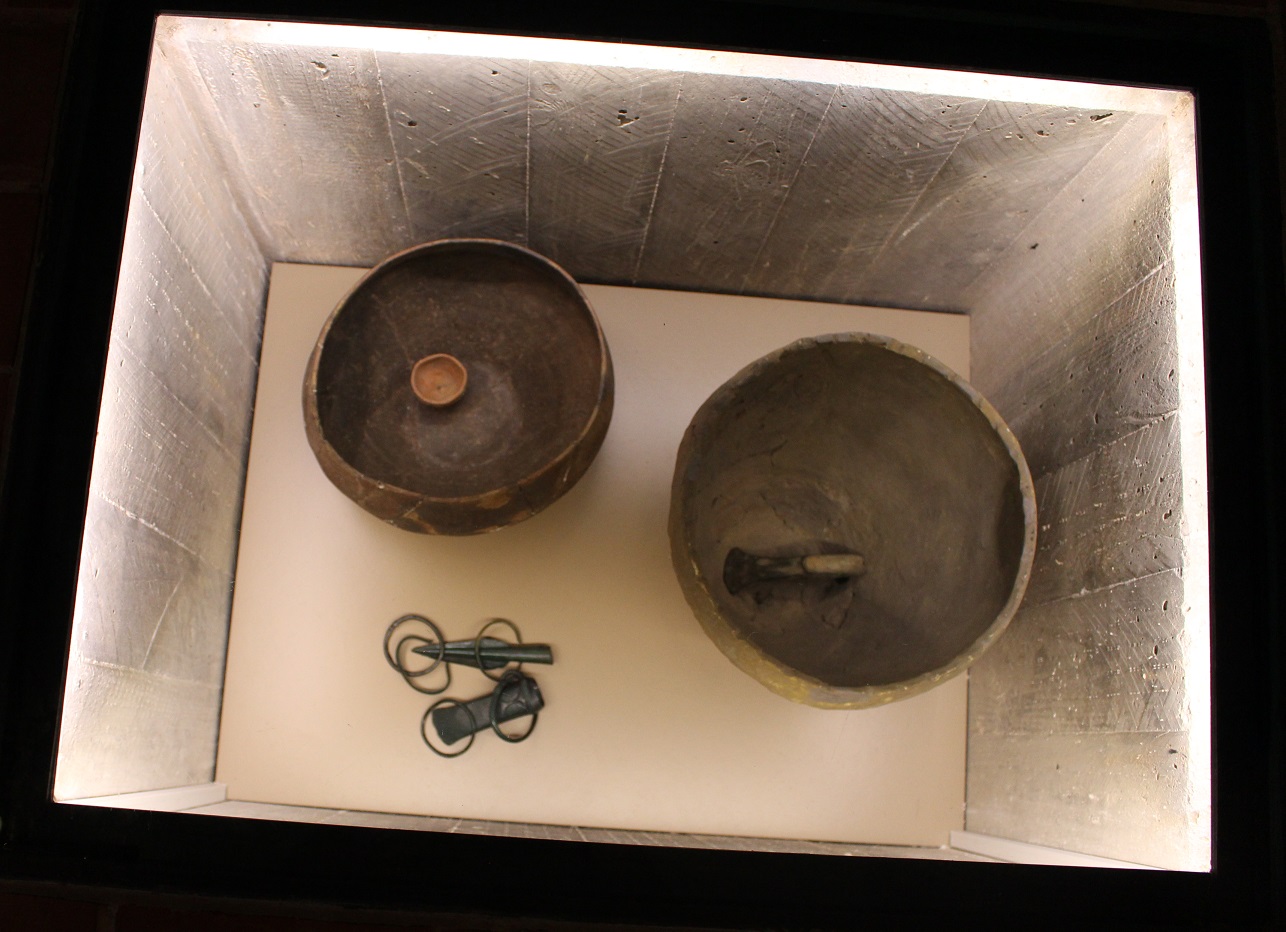
Rugged pot from Harpstedt, hoard from Afferde and urn from urn cemetery at Wangelist, © Museum Hameln
Bronze Age
Rugged pot from Harpstedt
Hamelin, Hamelin/Ohr
This simple form of vessel was very common. The pottery is not quite sealed. The escaping moisture cooled the provisions stored there. The roughness increased the surface area of the clay and thus the cooling effect.
Presumably these are burial objects, which is why the vessel and palstave are so well-preserved.
Bronze hoard from Afferde
Hamelin/Afferde 1904
Seven bronze objects were found deep underground during excavation works: a lance tip, a socketed axe and five armbands. They date to the Late Bronze Age. Such hoards are nothing unusual. Why the valuable objects were buried can only be verified in rare cases. Possibly they were hidden from attackers, but it can also be a type of storage belonging to a trader or bronze smith. The weight of the buried bronze primarily determines its value, while the shape is less important.
Items on loan: Landesmuseum Hannover
Urn cemetery at Wangelist
Hamelin/Wangelist 1982
The Lower Saxony Regional Office for the Protection of Monuments and Sites excavated 67 urn graves in total at the Wangelist site in 1982. The shape and decoration of the ceramics date the graves to the end of the Bronze period and the beginning of the pre-Roman Iron Age (9th/8th century BC). The age and gender of the deceased can be determined by examination of the cremated remains: eleven men, eleven women and 20 children or young people have been identified. A further 20 burials are adults. Their gender cannot be determined.
Investigations have found an infant mortality rate of 34% – an average value for those times. Women often died in childbirth, men in battle. Those who reached the age of 30 in fact have a good chance of growing old.
